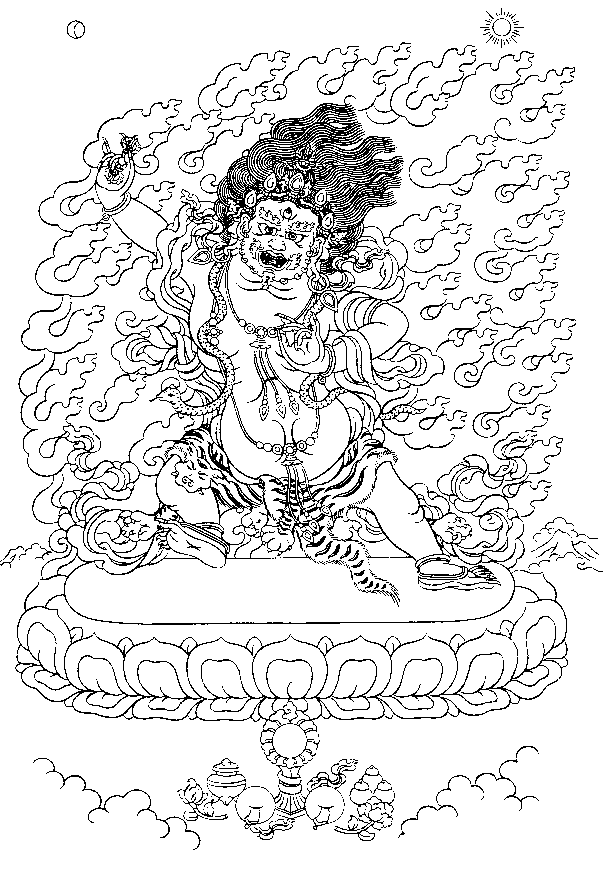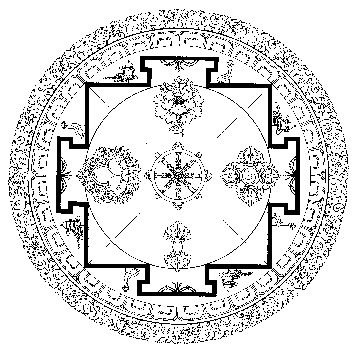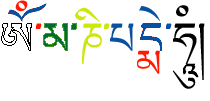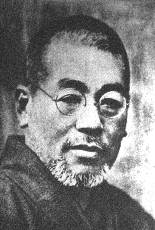
Healing in Buddhism
A personal view - part 2
(By Gordon Bell)
Copyright© Gordon Bell 1996, 1998
The Twelve Warriors of Bhaisajyaguru
Apart from the Healing Buddha (Jp-Yakushi Nyorai) being assisted by Sunlight and Moonlight Bodhisattvas (Suryaprabha Jp-Nikko Bosatsu and Candraprabha Jp-Gakko Bosatsu), he also commands twelve warriors (Yaksas). They are sometimes said to protect the faithful through the hours of the day, the months and the directions of space. They wage war on sickness and are said to command the 80,000 pores of the skin. They are said to relate to each of the twelve vows of Bhaisajyaguru. They are depicted as fearsome warriors in armour, in martial or menacing stances, with hair in spikes and wearing fearsome expressions. Their names are Khumbira (Jp-Kubira); Vajra (Jp-Bazara, Bajira); Mihira (Jp-Mekira); Andira (Jp-Anteira); Anila (Jp-Anira); Sandilya (Jp-sandeira); Indra (Jp-Indara, Indatsura); Pajra (Jp-Haira); Mahoraga (Jp-Makora, Makura); Sindura (Jp- Kimnara, Shindara); Catura (Jp-Shotora), and Vikarla (Jp Bikyara).
As an example of how we can call upon the Twelve Yaksas; one Soto Zen schools in the West (The Order of Buddhist Contemplatives) have a mantra practice which is used before sleep. It calls on one of the Yaksas (Makura) for support and protection. The mantra is sometimes used with a mudra (hand and body position) to help calm and sedate the flows of chi in the meridians and a repetition of Taking Refuge in the Three Jewels.
TRANSFERENCE OF MERIT
There is a concept in Buddhism of merit. Merits could be said to positive karmic influences. As the adept of Buddhist meditation practises there naturally arises merit, which can be dedicated to others. This is an expression of the Bodhisattva Vow to strive for perfection and enlightenment but to forego it to help all beings.
There are specific practices in Theravada Buddhism that monks and laity alike can do to bring about merit or positive influences for themselves and others. These usually revolve reciting Buddhist scriptures/rules etc., (one such scripture used is Bojjhanga Parrita) often in the presence of food or water which can be used as a medium for the transference of positive influence. Where water is used, it can anoint the sick, or be consumed.

In Mahayana Buddhism such as Zen, it is not unusual to dedicate the practice of meditation to the sick. In Vajrayana Buddhism it is taken a stage further - and the idea of a "merit-storehouse" is present. Again specific practises are performed, puja, ceremony, meditations, mantras etc., are used to "charge" or connect with the merit-storehouse. Specific deities; their aspects and attributes are called upon to activate and perform this Transfer of Merit. The adept, through the skilful practice calls upon the energetic qualities of the "springs" of the various Buddhas and Bodhisattvas. Again, intermediaries like food or water can be used to help the transfer of merit. Tibetan Buddhist lamas for instance use simple foods like flour and water to make "pills" which are "charged" through the spiritual practices. They are given as both physical and spiritual medicine.
In Shingon there are many practises which connect with enlightened energy and direct it for support and healing. Let us just mention two as an example: Kaji:(SK:Adhisthana) Transference of the Buddha's Grace Which Inspires a Scared Peace of Mind. Through the power of the mind, via words, mantra, sacred syllables or phrases (dharani) preached by the Buddha which contain mystic truth and joining the hands for prayer. The power and blessings of the Buddha's teachings are invoked for self and others.
Another practice of Shingon is Ajikan meditation. The meditator focuses on the Sanskrit 'A' syllable. The 'A' is in a moon disc over a lotus: the moon symbolises the pure heart hidden in a person, and the lotus symbolises the heart latent within a person trying to achieve an enlightened state. The mantra "A VI RA UNG KAN" is recited which helps integrate with the Cosmic Mind at the same time as concentrating on the moon disc. The disc and lotus is visualised in light and absorbed into the body, then expanded and direct towards others for assistance, healing and support. The mantra relates to Dainichi Nyorai or Mahavairocana - the Cosmic Buddha. This meditation has been kept secret within the Shingon priesthood until very recently, but now several priests teach it to Westerners, to help connect with Universal/Cosmic Mind and promote healing through the "Transference of the Buddha's Grace." Since Mikao Usui converted to Shingon, then we can assume that the Shingon practises were a major influence in the development of his system of Reiki.

Footnote:
The MEN-CHHOS-REI-KEI© (Medicine Dharma Rei-Kei©) school of Natural Healing whose spiritual studies are based on the tantra (secret teaching) relating to the Medicine Buddha (The Tantra of the Lightning Flash). This teaching was part of the material Dr. Usui studied in his quest for Enlightenment and he included it in the Inner teachings of Rei Kei. Its healing practises include a wide variety of Buddhist deities and spiritual disciplines, and connection with oriental medicine, and other energy medicines available in the early 20th century. Dr. Usui used a range of techniques in his healing practices other than "laying on of hands," they included using specific points on the body, hand gestures (mudras), use of crystal balls in the preparation of plant and energy medicines, the use of "charged" crystal balls on points on the body, the transference of merit from the various Buddhic "Merit-Storehouses." The instruction for these additional skills were part of the "inner" teachings of Rei Kei taught only to some of his senior students and only to those who had taken Refuge in Buddhism. These teachings were not transmitted through the secular teachings of the Western Takata lineages and there is little evidence that they were transmitted within the more secretive surviving Japanese lineages.
Quote from the book "Pure Heart, Enlightened Mind" - Maura "Soshin" O'Halloran
Once renuciation and the awakened mind have been fully realised, the way to Buddhahood is clear. Liberation is complete and such liberated beings are then bodhisattvas and buddhas: "enlightened ones," or "empty dwellers." Their usefulness to others both before and after their physical death, is impossible to conceive. They are nothing but useful energy leading to liberation for all beings still caught in conditioned existence.
Pictures of Medicine Buddha Triad and Heavenly Generals at Toji Temple in Kyoto

